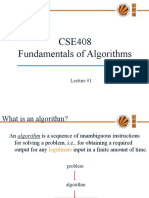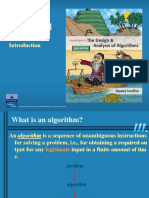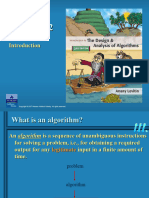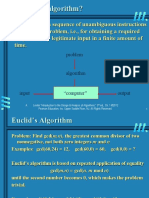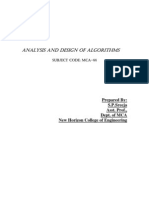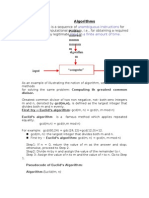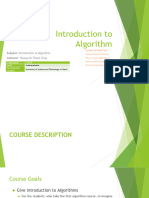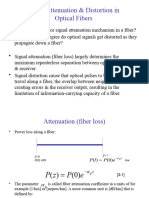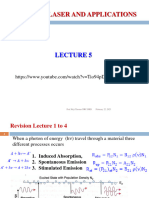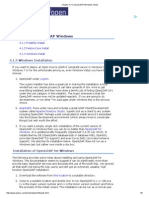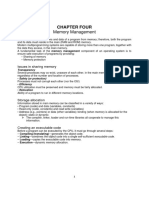0% found this document useful (0 votes)
97 views28 pagesFundamental of Algorithms
The document provides an introduction to algorithms, defining them as sequences of unambiguous instructions for problem-solving that yield a required output for any legitimate input in a finite time. It discusses the characteristics of algorithms, historical examples like Euclid's algorithm, various algorithm design strategies, and the importance of analyzing algorithm efficiency. Additionally, it covers specific computational problems such as sorting and searching, along with examples of algorithms used to solve these problems.
Uploaded by
sahil.sk0818Copyright
© © All Rights Reserved
We take content rights seriously. If you suspect this is your content, claim it here.
Available Formats
Download as PDF, TXT or read online on Scribd
0% found this document useful (0 votes)
97 views28 pagesFundamental of Algorithms
The document provides an introduction to algorithms, defining them as sequences of unambiguous instructions for problem-solving that yield a required output for any legitimate input in a finite time. It discusses the characteristics of algorithms, historical examples like Euclid's algorithm, various algorithm design strategies, and the importance of analyzing algorithm efficiency. Additionally, it covers specific computational problems such as sorting and searching, along with examples of algorithms used to solve these problems.
Uploaded by
sahil.sk0818Copyright
© © All Rights Reserved
We take content rights seriously. If you suspect this is your content, claim it here.
Available Formats
Download as PDF, TXT or read online on Scribd
/ 28

